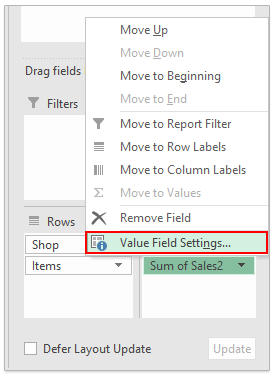
We can’t tell what dimension is going to selected for analysis User validating this data from AAS using excel plugin.
#Excel pivot table add subtotal to grandtotal how to#
Please guide me How to correct the grand total based on selections I have fact table with 8 dimensions and average grand total should work based on selected dimension. It works properly for some rows but it stopped then : + SUMX(VALUES('Calendar'),'Calendar'))Ĭumulative Total Measure = CALCULATE(,įILTER(ALLSELECTED('Calendar'),'Calendar' = DATE(2021,07,17))

I have an issue with summarizing multiple measures. Is it annoying to have to create multiple measures and specifically tailor them to each individual visual? Yes, yes it is.ĮyJrIjoiODBmNmI4YjItZTMwYi00ZDU4LTg0MWItMzYyZWU3ODk4ZWI4IiwidCI6IjRhMDQyNzQzLTM3M2EtNDNkMi04MjdiLTAwM2Y0YzdiYTFlNSIsImMiOjN9 The "m_Single" measure is still used, but not directly in the visuals themselves. We use these "m_Total" measures in our visualizations. If we are summarizing by, we create this measure:

VAR _table = SUMMARIZE('Table1',"_value",) So, if we are summarizing by, we create this measure: This measure will cause problems in total lines. In effect, you are recreating the displayed visualization in memory as a table and then doing a summation across that table for the total line, as you would intuitively expect a total line in a table or matrix to work. The measures presented in this PBIX file also do a HASONEVALUE check that isn't really necessary in most cases but perhaps lends a little confidence to the user that the SUMX is only employed in the Total line and might also add some performance improvements. Finally, perform a SUMX across that summarized table. Now, create an "m_Total" measure that performs a SUMMARIZE of your data, exactly as how it is displayed in your table or matrix and use the "m_Single" measure within that SUMMARIZE statement to provide the values for the individually summarized rows. For more complex scenarios, see my Matrix Measure Total Triple Threat Rock & Roll measure.Įssentially, create a measure, any measure, that performs your desired calculation and returns the correct result at the row level. The technique employed here is fairly simple and should work in all "standard" cases of where you just want the Total line to, well, display the total (sum) of a measure. If you want to understand why, read this post. Shout it out loud, it's Measure Totals, The Final Word!Īt some point, we've all been frustrated by measure totals. They work to make sure the totals are right! They work with rows and columns and labels.


 0 kommentar(er)
0 kommentar(er)
